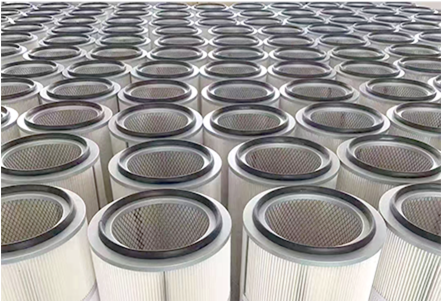 Tel:
+8615930870079
Tel:
+8615930870079
ديسمبر . 09, 2024 19:42 Back to list
Choosing the Right Cartridge Oil Filter for Your Vehicle Maintenance Needs
Understanding Cartridge Oil Filters A Comprehensive Guide
When it comes to maintaining your vehicle, oil changes are a fundamental aspect that cannot be overlooked. Among the various components involved in the oil change process, the oil filter holds significant importance. One of the most commonly used types of oil filters is the cartridge oil filter. In this article, we will explore what cartridge oil filters are, how they work, their advantages and disadvantages, and the best practices for replacement.
What is a Cartridge Oil Filter?
A cartridge oil filter is a cylindrical container that houses filter media designed to trap contaminants in engine oil. Unlike traditional spin-on filters, which come as a single unit where the filter element is permanently sealed within a metal canister, cartridge filters consist of a replaceable filter element and a housing structure. This design allows for easier recycling and reduces the amount of waste generated during oil changes.
How Does a Cartridge Oil Filter Work?
The primary function of the cartridge oil filter is to filter out dirt, debris, and other contaminants from the engine oil. As the oil circulates through the engine, it picks up particles from the combustion process, wear and tear from engine components, and external contaminants.
When the engine oil passes through the cartridge filter, it flows through the filter media, which is typically made from synthetic fibers, cellulose, or a combination of materials. These materials capture impurities while allowing the clean oil to pass through. Eventually, the filter becomes saturated with contaminants, necessitating replacement to maintain optimal engine performance.
Advantages of Cartridge Oil Filters
One of the primary advantages of cartridge oil filters is their eco-friendliness. Since only the filter element needs to be replaced and not the entire housing, there is less waste produced, making them a more sustainable option. Additionally, cartridge filters often have a higher filtration efficiency compared to traditional filters. Their design allows for larger surface areas, facilitating improved oil flow and better contaminant removal.
Another benefit is the ease of inspection. Many cartridge filters are designed with a clear housing, allowing mechanics and vehicle owners to visually ascertain the condition of the filter without removing it. This saves time and effort during regular maintenance checks.
Disadvantages of Cartridge Oil Filters
cartridge oil filter

Despite their advantages, cartridge oil filters also come with a few disadvantages. One of the most significant concerns is the potential for oil leaks. If the filter element is not correctly installed or if the O-ring fails, it can lead to leaks, potentially causing engine damage over time.
Another drawback is the cost. Cartridge oil filters can be more expensive than standard spin-on filters due to their complex design and manufacturing processes. However, many vehicle owners find the benefits outweigh the costs, especially given the long-term savings related to engine health and performance.
Best Practices for Replacement
Replacing a cartridge oil filter is a straightforward process that can be carried out by both professionals and DIY enthusiasts. Here are some best practices to follow
1. Read the Manufacturer’s Instructions Always consult your vehicle’s manual for specific recommendations on filter type and replacement intervals.
2. Use the Right Tools Ensure you have the appropriate tools to remove and install the filter. A filter wrench may be helpful for securing the housing.
3. Oil the O-ring Before installing a new filter element, apply a small amount of fresh oil to the O-ring to ensure a proper seal and prevent leaks.
4. Check for Leaks After installation, start the engine and let it run for a few minutes. Inspect the area around the filter for any signs of leaks.
5. Dispose of Replaced Elements Properly Take used filter elements to a designated recycling or disposal center to minimize environmental impact.
Conclusion
Cartridge oil filters represent a modern approach to engine oil filtration, combining efficiency with environmental consciousness. Understanding their function and maintenance can lead to better vehicle performance and longevity. By adhering to best practices and staying informed about your specific vehicle needs, you can make the most out of your cartridge oil filter and ensure your engine runs smoothly for miles to come.
-
Nano Fiber Technology: Revolutionizing Cartridge Dust Collector FiltersNewsAug.06,2025
-
How Activated Carbon Air Cartridges Eliminate OdorsNewsAug.06,2025
-
Dust Filter Cartridge Handling Fine Particulate MatterNewsAug.06,2025
-
Cartridge Dust Collector Filter for Welding Fume ExtractionNewsAug.06,2025
-
Activated Carbon Filter Cartridge Effectiveness Against VOCsNewsAug.06,2025
-
Activated Carbon Air Filter Cartridge Benefits ExplainedNewsAug.06,2025

 Email:
Email:





